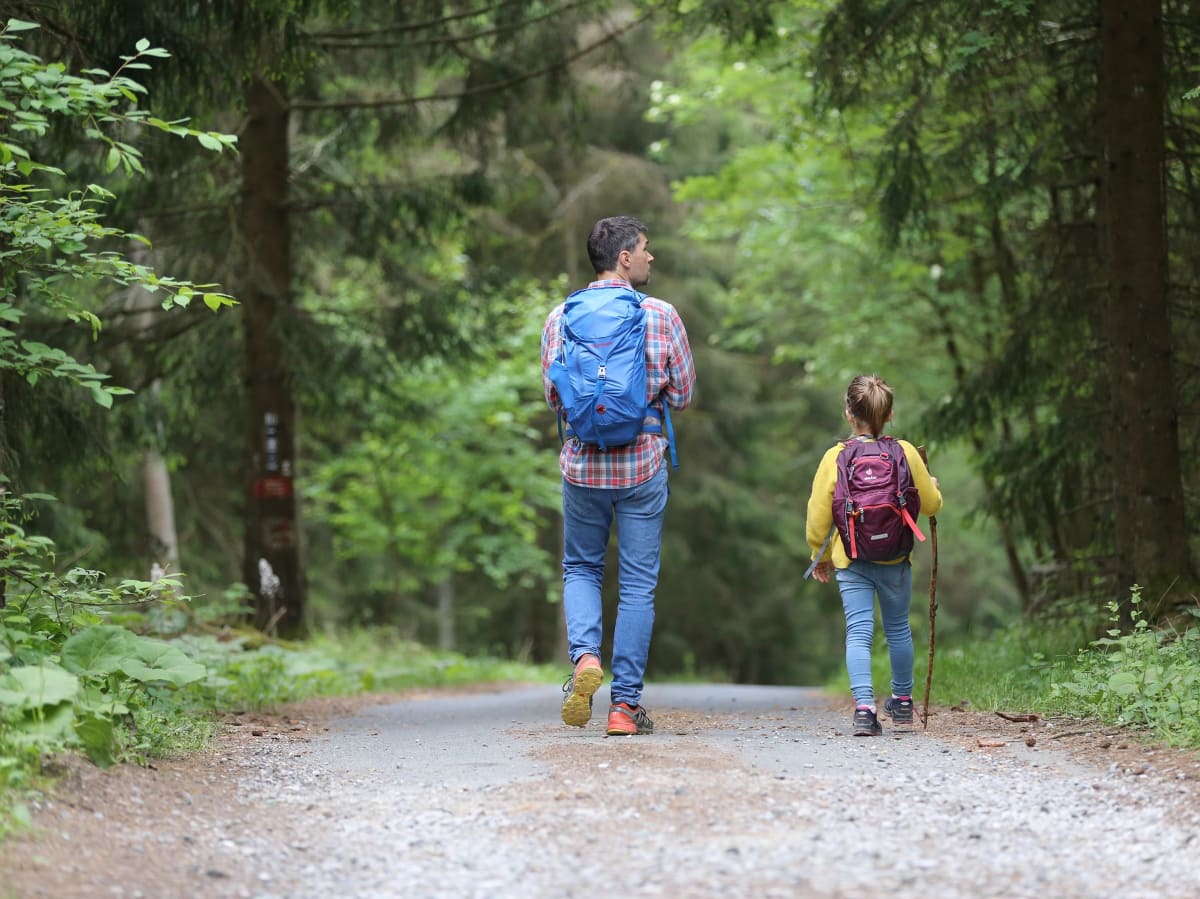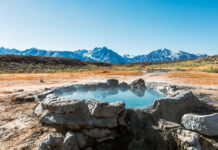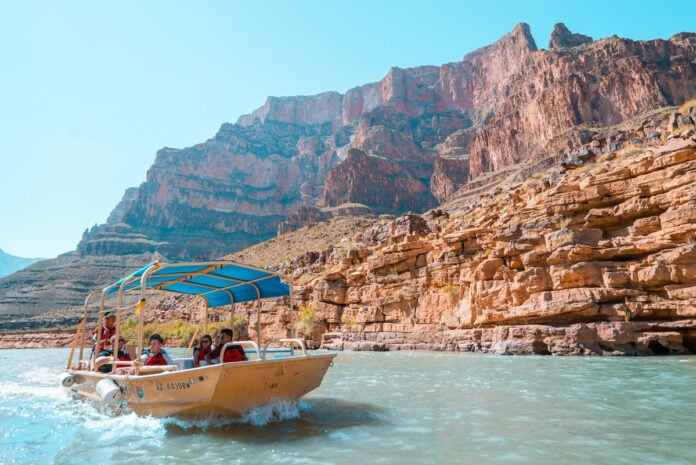There are 63 national parks in the United States (think Yellowstone National Park and Yosemite National Park), but there are more than 400 national park sites in the United States and its territories, including National Historic Sites, National Monuments, National Seashores, and National Recreation Areas, to name a few. Many national parks and national park sites charge an entrance fee. This helps to cover the cost of park upkeep and to fund critical projects that improve services and protect resources. Despite the entrance fee, visiting national parks on a budget is easy. Here are six of the easiest ways to see everything the National Park Service has to offer, without breaking the bank.
Table of Contents
1. Take Advantage of Fee-free Days

Each year, the National Park Service holds fee-free days. On these designated days, every National Park Service site that charges an entrance fee offers free admission to everyone. That includes national parks like Yellowstone National Park and Grand Canyon National Park, as well as other national park sites like the Wright Brothers National Memorial. The dates are spread out over the course of the year and typically include Martin Luther King, Jr. Day in January, the beginning of National Park Week in April, the National Park Service’s Birthday in August, National Public Lands Day in September, and Veterans Day in November, to make visiting national parks on a budget throughout the year super easy.
The dates for the upcoming year are announced in advance so you can start planning your trip once they are published and coordinate your vacation so it lines up with one of that year’s fee-free days.
READ MORE: 20 Kid Travel Friendly Destinations to Visit Before Your Child Turns 10
2. Look into Passes for Visiting National Parks
The National Park Service offers a bunch of different passes that you can take advantage of to keep costs down when visiting national parks. There are free or discounted passes available for senior citizens, current members of the military, and disabled citizens.
One cool opportunity pass you may not know about is the National Park Foundation’s Every Kid Outdoors campaign that allows fourth graders and their family members free access to over 2,000 federal lands and waters. To obtain a pass, fourth grade students can visit the Every Kid Outdoors website, participate in a short educational activity, and then download a paper voucher to print and bring with them to visit national parks all across the country for the entire year. The initiative starts each year on September 1 and runs through August 31.

Another option is to purchase an annual pass rather than paying the entrance fee each time you visit a park. An America the Beautiful Annual Pass covers entrance fees at national parks and national wildlife refuges, as well as standard day use fees at national forests and other sites. An Annual Pass currently costs $80, so if you plan on visiting national parks and other national parks sites multiple times in the same year, this option is the perfect option and will save you so much money.
You can also buy a site-specific annual pass if there is a specific park that you like to visit. This is your best option for visiting national parks if you live nearby or in the same state as one of the national parks that charge an entrance fee. Park-specific annual passes cost less than the America the Beautiful Annual Pass and allow you unlimited access to that particular park for an entire year.
READ MORE: 10 Great Camper Van Hacks You’ll Definitely Want to Know
3. Consider Camping in the Park

Another way visiting national parks can meet your budget needs is if you set up camp in the park or at a nearby campground, rather than staying in a hotel or an AirBnB. Camping fees within the national parks are super affordable and often only cost around $20 per night if you are camping in a tent. Even RV camping is affordable and can cost just $40 per night. For an even cheaper option, visit and camp during the off-season when the price is often reduced at most parks. For instance, camping at Badlands National Park in the winter can cost as little as $15 per night.
If you are planning to go camping in the parks during summer, know that they often fill up quickly due to popularity and a limited amount of campsites. Reserve a spot in advance, especially if you plan on visiting national parks that are some of the more popular parks because they are often booked months in advance.
READ MORE: Top 10 Places to Try Glamping in a Tent
4. Volunteer

The National Park Service offers all kinds of volunteer opportunities for both individuals and groups as part of their Volunteers-In-Parks program. Most parks have programs for visitors who want to donate a little of their time. Volunteer opportunities range from a one-time service project to a longer-term position where you can serve alongside park employees or with one of the Parks Services’ partner organizations. Spend time visiting national parks by volunteering at a park’s visitor center, as a climbing steward, as a campground host, or helping with trail maintenance.
Opportunities are available at parks across the country. An extra perk here is that volunteers with 250 service hours are eligible for the Interagency Pass Program and can earn a free pass that is valid at any park in the country for one year. Check out Volunteer.gov and search for available opportunities.
5. Learn about Free Park Activities
Many people visiting national parks do not realize how many free activities are available in the parks. There are all sorts of ranger-led talks and walks, but there are also some cool activities available that do not cost visitors a thing.

For instance, you can go bear watching in Katmai National Park in Alaska. The park has viewing platforms where visitors can watch bears from a safe distance while the bears fish for salmon along the river. In South Carolina’s Congaree National Park, you can take a ranger-led canoe tour and look out for bald eagles and enjoy the old-growth bottomland forest, which is the only one of its kind in the country. Or, take a soak in a hot spring in Big Bend National Park. Amazingly, none of those things cost an additional fee beyond the entrance fee to the park.
6. Keep Track of Park Tips, Promotions, and Updates

Subscribe to the National Park Service’s newsletter to keep up with park tips, promotions, and updates, so that visiting national parks will be easier than ever. Each month, the Park Service shares updates and provides information like how to volunteer in a national park or free park guides that have travel tips and other helpful information. They also share promotions like the park service’s fee-free days as well as promote cool things going on like National Park Week. It is a great way to keep up with the goings-on of the Park Serice without having to search a bunch of webpages.
READ MORE: A Beginners Guide to Grand Canyon Camping
National parks are some of the most beautiful lands the United States has to offer. There are so many amazing things to see and places to travel within the parks. There is nothing in the world like the Grand Canyon or the redwood trees in California. Visiting national parks can be a great way to spend your family vacation and can be done with families of all shapes and sizes—bring the grandparents, strap your toddler on your back, and hit the road or hiking trails. Now that you have some tips and tricks for visiting national parks on a budget, there is no excuse not to explore the great outdoors.
WANT TO READ MORE?
Check out Fun Family Adventure: Camping at Shenandoah National Park with Kids in 2021 to help you with that!
ENJOYED THIS? CONNECT WITH US ON SOCIAL MEDIA
• Newsletter: Every Avenue Travel delivered to you
• Facebook: @EveryAvenueTravel
• Instagram: @TravelEveryAvenue
💖WANT TO TRAVEL MORE?💖
Subscribe to receive trip ideas and inspiration right into your inbox once a week!
📌PIN THIS FOR FUTURE REFERENCE 📌

































